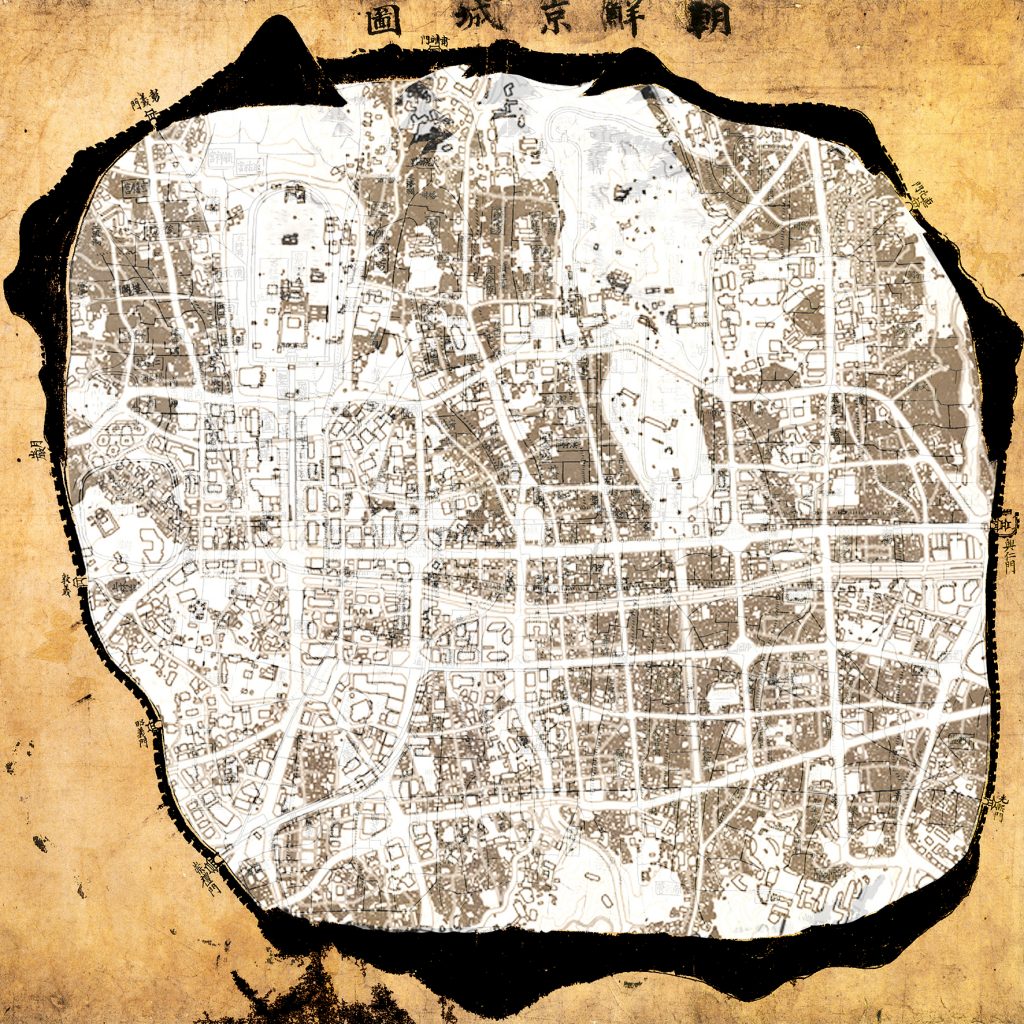
DOCTORAL STUDENT
SUPERVISOR
Professor Christophe Girot
CO-SUPERVISOR
Professor Sung Hong Kim, University of Seoul
PROJECT TIMEFRAME
Completion: 2019
PROJECT FUNDING
Swiss National Science Foundation, SNF
Emergence, Narrative and Impact of Culturally Related Landscape Meanings
The doctoral thesis aims to decode culturally related landscape approaches and meanings in Seoul. It seeks to examine their emergence, narrative, perception, and their translation in contemporary landscape architecture.
The focus lies on landscape restoration projects, which have influenced the urban fabric of the Korean capital Seoul since the 1980s. The landscape restoration projects have been supported by a paradigm shift from growth-oriented to environment-oriented approaches in Korean urban planning. In this context, the Seoul Metropolitan Government has sought means to convey traditional, historical and natural values through landscape restoration. In consequence, Seoul’s landscape elements—mountains, rivers, and valleys—have been cleared of apartment buildings and urban infrastructure, and afterwards have been greened. The challenge in many of these landscape restoration projects, however, has been to convey the traditional landscape meaning of these sites while meeting today’s landscape architectural standards and requirements as well as the needs of citizens. In order to gain a deeper understanding of how to deal with these challenges, the dissertation examines existing landscape restoration projects such as the restoration of Namsan (1990–2000), the restoration of Naksan (1997–2002), and the restoration of Inwangsan’s Suseongdong Valley (2007–2012).
As a result, the dissertation first outlines the social, political, and cultural contexts from which the trend towards landscape restoration has emerged and answers the question of why restoration has become a popular landscape approach in Korean urban planning and landscape architecture. Second, the dissertation analyzes how culturally rooted landscape concepts are translated into the present. By comparing the intertextuality of the landscape—related exhibitions, planning documents, and information brochures—with interviews of municipal officials, practitioners, artists, and citizens affected by the projects, the thesis identifies the transmission, erasure and the reinterpretation of distinct landscape meanings and concepts. The tensions between national and local narratives imbedded in the sites are revealed, especially as related to power structures and prevalent ideologies. Third, the dissertation clarifies the relationship between the narrative, the built space, and the visitor’s reception. It explains how the acceptance and appropriation of these projects is influenced by a complex web of meanings, resources, and conflicts grounded upon different cultural and historical interpretations. On this basis, this dissertation argues for a mediating approach in landscape architecture that includes culturally related landscape understandings in the design for the creation of a spatial identity.
Zusammenfassung
Ziel der Dissertation „Kulturlabor Seoul“ ist es kulturbezogene Landschaftsansätze und -bedeutungen in Seoul zu entschlüsseln. Es geht darum, ihre Entstehung, Erzählung und Wahrnehmung sowie ihre Umsetzung in die zeitgenössische Landschaftsgestaltung zu untersuchen.
Der Fokus liegt auf Landschaftsrestaurierungsprojekten in Seoul, die die Stadt seit den 1980er Jahren erkennbar transformiert haben. Ein Paradigmenwechsel von wachstumsorientierten hin zu umweltorientierten Planungsansätzen im koreanischen Städtebau führte dazu, dass die Seouler Stadtverwaltung zunehmend Gewicht auf tradierte Landschaftswerte und -bedeutungen legte. Infolgedessen wurden Wohngebäude und urbane Infrastrukturen auf innerstädtischen Bergen, in Tälern und in früheren Flussbetten abgerissen und die Landschaft wiederhergestellt. Der Trend der Landschaftsrestaurierung führte jedoch zu sozialen, kulturellen und planerischen Ambivalenzen, unter anderem auch zu der Herausforderung, tradierte Landschaftsbedeutungen in Einklang mit modernen landschaftsarchitektonischen Standards sowie veränderten Bedürfnissen der Einwohner zu bringen. Um Konfliktpunkte in den Projekten zu identifizieren und besser zu verstehen, untersucht die Dissertation bereits gebaute Projekte in Seoul: die Wiederherstellung des Berges Namsan(1990–2000), die Wiederherstellung des Berges Naksan (1997–2002) und die Wiederherstellung des Tals Suseongdong am Berg Inwangsan (2007–2012).
Anhand dieser Projekte beleuchtet die Dissertation erstens den historischen, politischen und soziokulturellen Kontext, aus dem sich der Trend der Landschaftsrestaurierung entwickelt hat. Dabei beantwortet sie die Frage, weshalb in Korea eine Wiederherstellung von geschichts- und kulturbezogenen Landschaftselementen zu einem populären Planungsansatz avancierte. Zweitens untersucht die Dissertation, wie kulturell tradierte Landschaftsbedeutungen in die Gegenwart übersetzt wurden. Der Fokus liegt dabei auf der Intertextualität der Landschaft, also auf projektbezogenen Ausstellungskatalogen, Informations- und Planungsdokumenten, die mit Interviews von Stadtbeamten, Planern, Künstlern und Bürgern verglichen wurden. Gezeigt wird dabei die Übertragung, Löschung und Neuinterpretation von Landschaftsbedeutungen, sowie die Spannung zwischen nationalen und lokalen Narrativen, welche Machtstrukturen und Ideologien offenlegen. Drittens analysiert die Dissertation das Verhältnis zwischen den Narrativen, dem gebauten Raum und der Besucherrezeption. Ein komplexes Geflecht von unterschiedlichen Interpretationen, von Ressourcen und Konflikten wird identifiziert, welches die Akzeptanz und die Aneignung dieser Orte nachweislich beeinflusst. Auf Basis dessen plädiert die Dissertation abschliessend für einen mediativen Ansatz in der Landschaftsarchitektur, der unterschiedliche geschichts- und kulturbezogene Landschaftsbedeutungen herausarbeitet und stärker in der Planung berücksichtigt, um einen identitätsstiftenden Raum zu schaffen.

